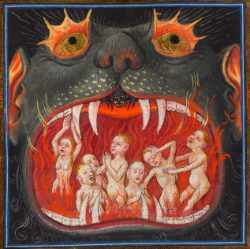Predation Tech & Types of Society
Predation Technologies
- conscription/slavery
- licensing productive activities
- in kind taxation
- money taxation
- seigniorage
- primitive seigniorage
- commodity seigniorage
- fiat seigniorage
- monetary hegemony
- production capture
- corporatism
- state ownership
- dirigism - generic authoritarianism

Types of Social Arrangements
| Tribes w/o Rulers acephalous societies |
"Government" both began and ended within the extended family, lineage, or clan. Thus there were no superiors except for men, elders, and parents, and no inferiors except for women, youngsters, and offspring. [p2] | Australian aborigines, the Eskimo of Alaska, Canada, and Greenland, the Kalahari Bushmen, some East African Nilotic tribes such as the Anuak, Dinka, Masai, and Nuer, the inhabitants of the New Guinea highlands and Micronesia; and most - though not all - pre-Columbian Amerindian tribes. [p2] |
|---|---|---|
| Chiefdoms tribes with rulers |
They had chiefs, i.e., individuals who were elevated over other people and possessed the right to command them. That right was invariably based on the chief’s alleged divine descent, which in turn dictated that the normal method of succes- sion should be from father to son. Still, a system whereby the eldest male descendant simply stepped into his predecessor’s shoes seldom applied. [p12] | Many societies in Southeast, West, and South Africa, as well as others all over SE Asia, Polynesia, Hawaii, and New Zealand, the tribes that destroyed the Mycenean civilization and ruled Greece during the Dark Ages between about 1000 and 750 BC; the various Gothic, Frankish, and other Germanic tribes, as they were from the later centuries of the Roman empire to the rise of the Carolingian empire in the eighth century AD; and the Scandinavian tribes during the tenth century AD. [p12] |
| Comment | The societies described so far were overwhelmingly rural. Their members were nomadic or semi-nomadic ... alternatively they lived in villages that might be more or less permanent. Either way, their livelihood depended almost exclusively on hunting–gathering, cattle-raising, fishing, and agriculture practiced mostly at the subsistence level. [p20-21] | |
| City-States | A permanent settlement with houses constructed of a durable material such as stone or brick. It contains a temple, a market place such as the Greek agora and Roman forum, as well as a building or buildings devoted to government, and a considerable number of inhabitants who no longer depend on agriculture as their principal occupation. Having mastered the art of writing or at any rate that of record-keeping, they engage in handicrafts, manufacturing, and trade. [p21] | Athens, Sparta, Carthage, early Rome. |
| Empires | Unlike the small-scale societies above, empires were often mighty organizations. Some were able to last for centuries and even millennia; this was particularly true of those which, like the ancient Egyptian and Chinese ones, were ethnically homogeneous and developed a political system that was all but identical with the culture in question. [p36] | Chinese, Egyptian, Roman, Aztec, Inca, Assyrian, Babylonian, Persian, Arab, Mongol, Ottoman, and Mogul empires. [p37] |
| Corporate States | The modern State is a corporation in the sense that it possesses a legal persona of its own, i.e. it has rights and duties and may engage in various activities as if it were a real, flesh-and-blood, living individual. The points where the state differs from other corporations are, first, the fact that it authorizes them all but is itself authorized (recognized) solely by others of its kind; secondly, that certain functions (known collectively as the attributes of sovereignty) are reser- ved for it alone; and, thirdly, that it exercises those functions over a certain territory inside which its jurisdiction is both exclusive and all-embracing. [1] | All modern states. |
| Modern Anarchy | All social functions are done voluntarily by market or other consensual arrangements. No longer does the predatory institution of State exist; its traditional monopoly on arbitration, law enforcement, and defense are now done by voluntary society. Cf: The Anarchist FAQ. | Free autonomous zones. |
Page numbers refer to The Rise and Decline of the State by Martin van Creveld.
